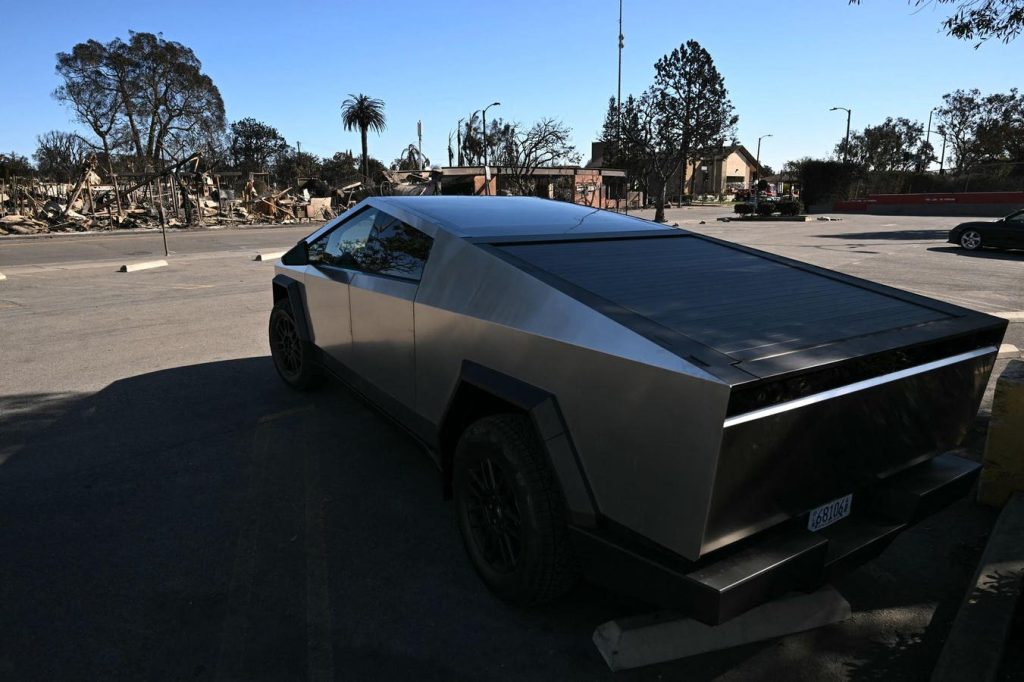The Tesla Cybertruck’s launch, initially met with immense hype and over a million pre-orders, has encountered significant headwinds a year after its release. Sales figures, while not explicitly disclosed by Tesla, appear underwhelming. Fourth-quarter 2024 estimates suggest only around 6,000 units were sold, a meager 1.5% of Tesla’s total vehicle deliveries. This starkly contrasts with the initial enthusiasm surrounding the vehicle and raises questions about the factors impacting its market performance. Several issues, from price hikes to altered specifications, have dampened the Cybertruck’s appeal.
One primary factor contributing to the Cybertruck’s sluggish sales is the significant price discrepancy between the initially promised and final retail prices. The base model, originally touted at $40,000, now carries a price tag over 50% higher, starting at $61,000, and is yet to be launched. The currently available dual-motor all-wheel-drive version begins at $80,000, while the top-tier model reaches $100,000. This steep price increase, coupled with reductions in the promised driving range and payload capacity, has likely discouraged many initial pre-order holders, who placed refundable $100 deposits, from completing their purchases. These altered specifications, combined with the vehicle’s radical design, may have alienated potential customers seeking practical and durable pickup trucks.
Furthermore, production does not appear to be the bottleneck. Tesla has implemented discounts and incentives for the Cybertruck, with near-immediate availability after order placement. Reports of production line slowdowns and staff reassignments to Model Y assembly further suggest that waning demand, rather than production limitations, is the primary issue. Despite the considerable size of the U.S. pickup truck market, with annual sales of roughly 3 million units for the top five manufacturers, the Cybertruck’s niche appeal and unconventional design may limit its market penetration. The demanding and brand-loyal nature of traditional pickup truck customers presents a significant challenge for Tesla.
Adding to Tesla’s challenges is the intensifying competition in the electric pickup truck segment. Rivian’s R1T, with its positive reception and competitive pricing starting at $70,000, poses a direct threat. Established automakers like Ford are also gaining traction with their electric offerings, such as the F-150 Lightning, which saw good early demand Despite recent cooling, it poses a significant challenge with its $55,000 starting price. These competitive pressures further complicate Tesla’s efforts to establish the Cybertruck in the market.
Looking ahead, Tesla faces the task of revitalizing Cybertruck sales. Potential strategies include introducing lower-priced variants, reducing entry prices, and expanding availability to international markets. While the U.S. represents the largest market for pickup trucks globally, international expansion could provide some incremental sales. The current $7,500 federal tax credit for the Cybertruck offers a financial incentive to potential buyers. However, the potential elimination of this credit under the incoming Trump administration poses a significant risk to future sales. Tesla’s goal of producing 250,000 Cybertrucks annually after 2025 appears highly ambitious given the current market dynamics.
Beyond the Cybertruck, Tesla faces broader challenges. The company experienced its first year-over-year decline in deliveries in over a decade in 2024. Growing competition from Chinese EV manufacturers in international markets and potential saturation of the early adopter EV market in the U.S. add further pressure. Aggressive price cuts, meant to stimulate demand, appear to have lost their efficacy amidst increasing price competition. Tesla’s current valuation, trading at 120 times its 2025 projected earnings, is considered high, leaving little margin for error if growth does not accelerate significantly. A comparison with a diversified portfolio of high-quality stocks demonstrates the potential for more consistent returns with reduced volatility compared to Tesla’s volatile stock performance. This comparison underscores the risks associated with investing in a single, high-valuation company like Tesla, especially given the uncertain macroeconomic environment and the intensifying competition in the EV sector.










